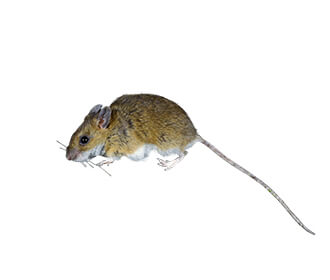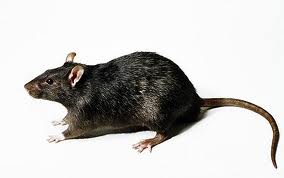
House Mouse (Mus domesticus)
Description: House mice are covered in short hair that is light brown or grey to black in colour, with lighter bellies. Their ears and tail also bear hair, although much less than their bodies. Adult Mice weigh approximately 12 to 30 grams and can grown up to 20cm from the nose to the tip of the tail. Droppings are rod shaped and pointed on both ends.
Biology: Mice reach sexual maturity at five to seven weeks, their gestation period when pregnant is between 17 and 21 days. The litter size is usually between four and sizteen babies. One female can have 5 to 10 litters per year, so the mouse population can increase very quickly. Breeding occurs throughout the year.
Control: After a site inspection, control measures will be put in place which may include baiting, trapping and proofing measures



